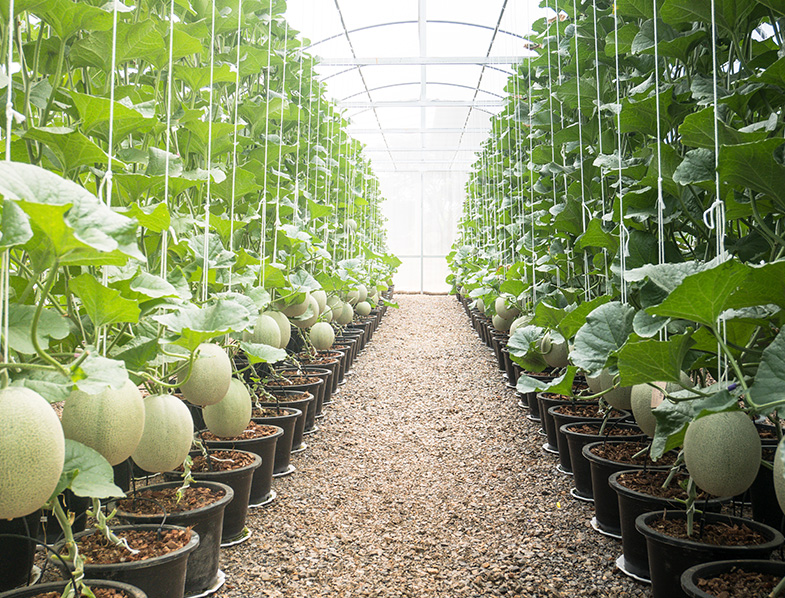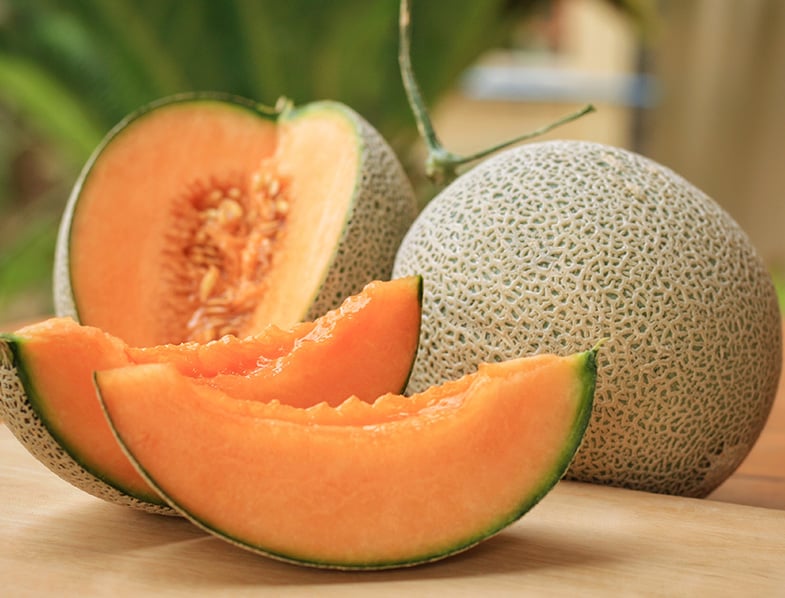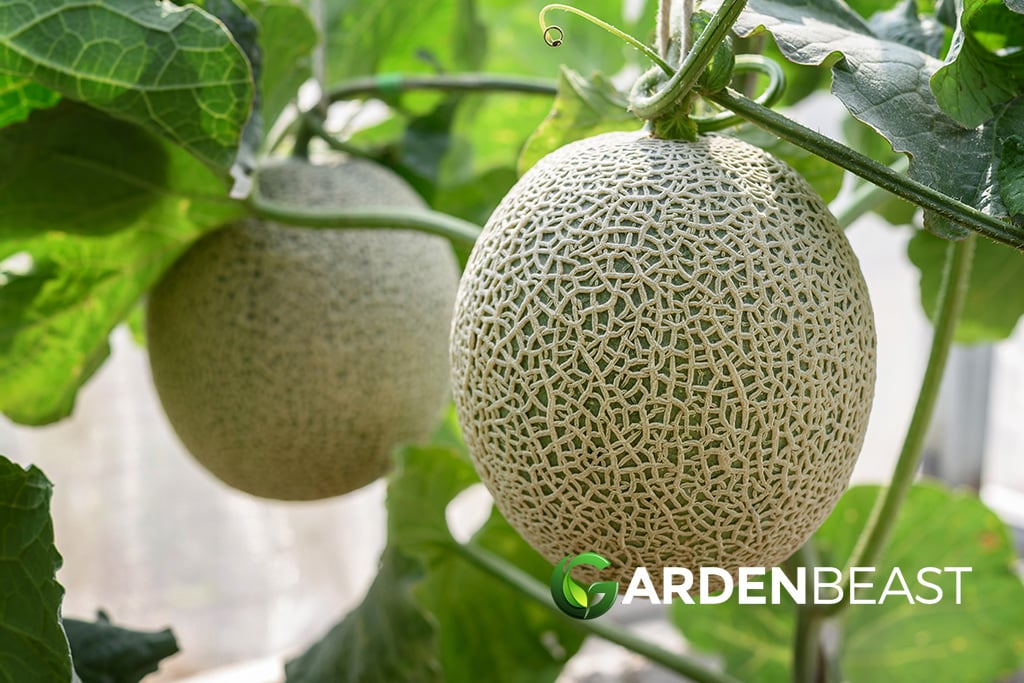If you’re looking to grow and care for cantaloupe, then you’ve come to the right place. Cantaloupes are a delicious and nutritious fruit that’s perfect for those who enjoy gardening. With the right preparation and care, you can easily grow your own cantaloupes. In this complete guide, we’ll take you through everything you need to know about growing cantaloupes and caring for them along the way.
Quick Facts
| Category | Description |
|---|---|
| Native to | Africa and India |
| Introduced in | Europe in the 16th century and in the United States by Christopher Columbus in 1494 |
| Largest producers | United States, China, and Turkey |
| Nutritional Benefits | High in vitamins A and C, dietary fiber, folate, potassium, and antioxidants |
| Varieties | Charentais, Honeydew, Galia, Cantaloupe |
| Soil Requirements | Fertile, well-drained soil with a pH level between 6.0 and 7.5 |
| Sunlight Requirements | Full sun exposure throughout the day |
| Seed Planting Time | In the springtime, after the last frost |
| Transplanting Time | 3-4 weeks after germination, when the seedlings are around 3-4 inches tall |
| Watering Requirements | Regular watering, once or twice a week, depending on weather conditions |
| Fertilization Requirements | Balanced fertilizer with equal amounts of nitrogen, phosphorus, and potassium every two weeks |
| Support for Fruit | Sling or net to support the heavy fruit as it grows |
| Harvesting Signs | Beige or yellow skin, prominent netting, dry and easily detachable stem, sweet aroma, heavy for its size |
Understanding Cantaloupe Basics
What are Cantaloupes?
Cantaloupes belong to the family of muskmelons and are native to Africa and India. They were introduced to Europe in the 16th century and were brought to the United States by Christopher Columbus on his second voyage in 1494. They are now grown all over the world, with the United States, China, and Turkey being the largest producers.
Cantaloupes are known for their sweet, juicy, and fragrant flesh, which is high in vitamins A and C. They are also a good source of dietary fiber, folate, and potassium.
Health Benefits of Cantaloupes
Cantaloupes are an excellent source of essential nutrients. They are low in calories and high in fiber, making them excellent for aiding digestion and promoting weight loss. They’re also packed with potassium, which is essential for maintaining healthy blood pressure levels. In addition, cantaloupes are rich in antioxidants, which help to protect the body against damage from harmful free radicals.
Studies have shown that consuming cantaloupes may help to reduce the risk of several chronic diseases, including heart disease, stroke, and certain types of cancer. They may also help to improve skin health and boost the immune system.
Cantaloupe Varieties
There are several varieties of cantaloupe, each with their own unique flavor and texture. Some of the most popular varieties include Charentais, Honeydew, Galia, and Cantaloupe. Each variety has its own set of characteristics, including size, color, and flavor.
Charentais cantaloupes are small, round melons with a sweet, musky flavor and a smooth, firm texture. They are often used in salads and desserts.
Honeydew melons are larger than cantaloupes and have a smooth, pale green skin. They have a sweet, juicy flesh that is often used in fruit salads and smoothies.
Galia melons are a cross between a cantaloupe and a honeydew melon. They have a sweet, tropical flavor and a juicy, fragrant flesh.
Cantaloupes are the most common variety of muskmelon and are known for their sweet, orange flesh and rough, netted skin.
When selecting cantaloupes, look for ones that are firm and heavy for their size. The skin should be evenly colored and free from any bruises or soft spots. Ripe cantaloupes will have a sweet, fragrant aroma.

Preparing the Soil for Cantaloupe Growth
Soil Requirements
Before you begin planting your cantaloupe seeds, it’s essential to take the necessary steps to prepare the soil. Cantaloupes grow best in fertile, well-drained soil with a pH level between 6.0 and 7.5. The soil should also be rich in organic matter, which helps to retain moisture and nutrients necessary for plant growth.
When selecting a location for your cantaloupe plants, it’s important to choose an area that receives full sun exposure throughout the day. This will ensure that your plants receive the necessary amount of sunlight to grow and produce fruit.
Testing and Amending the Soil
It’s recommended to test your soil before planting cantaloupes. You can do this by taking a sample of your soil and sending it to a local agricultural extension for testing. The soil test will provide you with information about the nutrient content of your soil, as well as its pH level and texture.
Based on the results of your soil test, you can amend the soil with the necessary nutrients, such as compost or fertilizer. Adding organic matter to your soil will help to improve its structure and fertility, which will promote healthy plant growth and increase fruit production.
Preparing the Planting Area
Before planting your cantaloupe seeds, it’s important to prepare the planting area properly. Ensure that the planting area is level and free of debris, rocks, and weeds. Use a garden hoe or rake to remove any weeds or debris from the soil surface.
It’s important to provide enough space between each planting to allow for proper growth and airflow. Cantaloupe plants should be spaced at least 3 to 4 feet apart to ensure that they have enough room to grow and produce fruit. You can also use trellises or supports to help your cantaloupe plants grow vertically, which can help to save space in your garden and increase fruit production.
By taking the time to properly prepare your soil and planting area, you can ensure that your cantaloupe plants have the best possible chance of success. With the right conditions, your plants will grow strong and healthy, producing delicious and nutritious fruit for you to enjoy.
Planting Cantaloupe Seeds
Cantaloupe is a delicious and nutritious fruit that is easy to grow in your own backyard. If you’re interested in planting cantaloupe seeds, there are a few things you should know to ensure a successful harvest.
When to Plant Cantaloupe Seeds
The best time to plant cantaloupe seeds is in the springtime, after the last frost has passed. This is usually around late April or early May. However, if you live in a warmer climate, you may be able to plant your cantaloupe seeds earlier in the year.
It’s important to wait until after the last frost because cantaloupe plants are very sensitive to cold temperatures. If the plants are exposed to frost, they may not survive, and you’ll have to start over.
How to Plant Cantaloupe Seeds
Planting cantaloupe seeds is easy, but there are a few things you should keep in mind to ensure success. First, choose a location that gets plenty of sunlight and has well-draining soil. Cantaloupe plants don’t like to sit in water, so it’s important to make sure the soil drains well.
When you’re ready to plant your seeds, dig a hole that is about 1 inch deep and 2 to 3 feet apart. Place one seed in each hole and cover it with soil. Gently water the area to help the soil settle around the seeds.
As the seeds germinate, it’s important to thin each plant to the strongest seedling. This will ensure that each plant has enough space to grow and produce fruit.
Germination and Seedling Care
Cantaloupe seeds usually take around 7 to 10 days to germinate. During this time, it’s important to keep the soil moist but not waterlogged. Overwatering can cause the seeds to rot before they have a chance to germinate.
Once the seedlings have emerged, they’ll need to be watered regularly and kept in a warm and sunny location. Cantaloupe plants love heat and sunshine, so make sure they’re getting plenty of both.
It’s also important to keep an eye out for pests and diseases, as these can quickly decimate your cantaloupe crop. Regularly inspect your plants for signs of damage or infestation, and take action immediately if you notice any problems.
With a little bit of care and attention, you can enjoy a bountiful harvest of delicious cantaloupe from your own backyard!

Transplanting Cantaloupe Seedlings
Cantaloupes are a delicious and nutritious fruit that can be grown in your very own garden. If you’ve started your cantaloupe seeds indoors, it’s important to know when and how to transplant them into your garden bed. Here are some tips and techniques to help you successfully transplant your cantaloupe seedlings.
When to Transplant
Transplanting cantaloupe seedlings at the right time is crucial to their success. When the seedlings have grown to around 3-4 inches, it’s time to transplant them to their permanent location. This is typically around 3-4 weeks after germination. Waiting too long to transplant can cause the seedlings to become root-bound, which can stunt their growth and reduce their yield.
Preparing the Garden Bed
Before transplanting your cantaloupe seedlings, it’s important to ensure that the garden bed is prepared in advance. Start by selecting a location that receives full sun and has well-draining soil. Cantaloupes thrive in warm soil, so it’s important to wait until after the last frost before transplanting.
Next, add organic matter, such as compost, to the garden bed. This will help improve the soil’s fertility and structure. Dig in additional fertilizer to provide the necessary nutrients for your cantaloupe plants to thrive.
Transplanting Tips and Techniques
When it comes to transplanting your cantaloupe seedlings, there are a few tips and techniques to keep in mind. First, be sure to water the seedlings thoroughly a few hours before transplanting. This will help keep the roots moist and make it easier to remove them from their containers.
When transplanting, be careful not to disturb the roots. Gently loosen the soil around the seedlings and carefully lift them out of their containers. Plant the seedlings just like you did their seeds, 2 to 3 feet apart. After planting, water the area thoroughly to help settle the soil and remove any air pockets.
It’s also a good idea to provide some support for your cantaloupe plants. You can use stakes or a trellis to help keep the vines off the ground and reduce the risk of disease. As your cantaloupe plants grow, be sure to monitor them regularly for pests and diseases, and provide additional water and fertilizer as needed.
Transplanting cantaloupe seedlings can be a rewarding and enjoyable experience. By following these tips and techniques, you can help ensure the success of your cantaloupe plants and enjoy a bountiful harvest of delicious, homegrown fruit.
Caring for Your Cantaloupe Plants
Now that you have planted your cantaloupe plants, it’s important to know how to take care of them properly. Cantaloupes are a delicious and nutritious fruit that requires specific care to grow healthy and strong. In this article, we will provide you with some tips on how to care for your cantaloupe plants.
Watering Your Cantaloupe Plants
Cantaloupe plants require regular watering to grow well. However, it’s important not to overwater them, as this can lead to root rot and other diseases. To avoid overwatering, water the plants deeply once or twice a week, depending on the weather conditions. Make sure the soil is moist but not waterlogged.
Controlling Pests and Diseases
Like any other plant, cantaloupe plants are susceptible to pests and diseases. To prevent infestations, inspect your plants regularly and remove any affected leaves or fruits. You can also use organic pesticides or insecticidal soaps to control pests. Additionally, make sure to keep the area around your plants clean and free of debris to prevent diseases from spreading.
Fertilizing Your Cantaloupe Plants
Cantaloupe plants require regular fertilization to grow healthy and produce a good harvest. Use a balanced fertilizer that contains equal amounts of nitrogen, phosphorus, and potassium. Apply the fertilizer every two weeks during the growing season, following the manufacturer’s instructions.
Supporting the Fruit
Cantaloupe plants produce heavy fruit that can break the vines if not supported properly. To prevent this, use a sling or net to support the fruit as it grows. You can make a sling by tying a piece of cloth or mesh around the fruit and attaching it to the vine. Alternatively, you can use a net to support the fruit by placing it under the fruit and tying it to the vine.
Harvesting Your Cantaloupe
Cantaloupes are ready to harvest when they are fully ripe. To determine if a cantaloupe is ripe, look for the following signs:
- The skin should be beige or yellow, and the netting should be prominent.
- The stem should be dry and easily detachable from the fruit.
- The fruit should have a sweet aroma and feel heavy for its size.
When harvesting cantaloupes, use a sharp knife or scissors to cut the stem about an inch above the fruit. Store the cantaloupes in a cool, dry place for up to a week, or in the refrigerator for up to two weeks.
By following these tips, you can ensure that your cantaloupe plants grow healthy and strong, and produce a bountiful harvest of sweet and juicy cantaloupes.

Conclusion
Growing and caring for cantaloupes can be a rewarding and delicious experience. With the right preparation and care, it’s easy to grow your own cantaloupes. Use the tips and techniques outlined in this guide, and you’ll soon be enjoying fresh and juicy cantaloupes.
Cantaloupe FAQS
How long does it take to grow cantaloupe?
The average time from planting cantaloupe seeds to harvest is around 70 to 90 days, depending on the variety and the growing conditions.
Are cantaloupes easy to grow?
Yes, cantaloupes can be quite easy to grow with the right conditions. They require a warm climate, plenty of sunshine, and well-drained soil. Regular watering and fertilization also help ensure a good harvest.
How many cantaloupes do you get from one plant?
The number of cantaloupes produced by one plant can vary depending on the variety and growing conditions. On average, you can expect one plant to produce 3 to 4 fruits.
How do you grow cantaloupe successfully?
Successful cantaloupe growth requires adequate preparation and care. This includes preparing the soil with organic matter, ensuring the plants get plenty of sunlight, providing ample space for growth, regular watering and fertilization, and taking measures to prevent pests and diseases.
Do cantaloupes grow back every year?
No, cantaloupes are annual plants, meaning they complete their life cycle in one growing season. You would need to plant new seeds each year if you want to continue harvesting cantaloupes.
What month do you plant cantaloupe?
Cantaloupe seeds are best planted in the springtime, typically around late April or early May, after the last frost has passed. However, if you live in a warmer climate, you may be able to plant your cantaloupe seeds earlier in the year.
